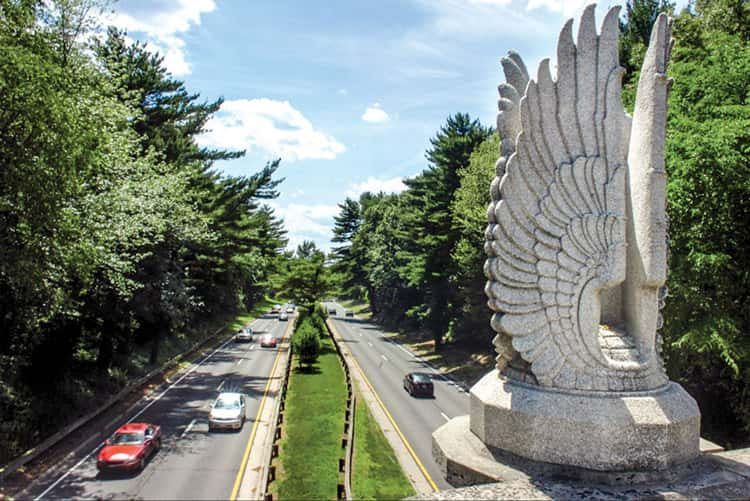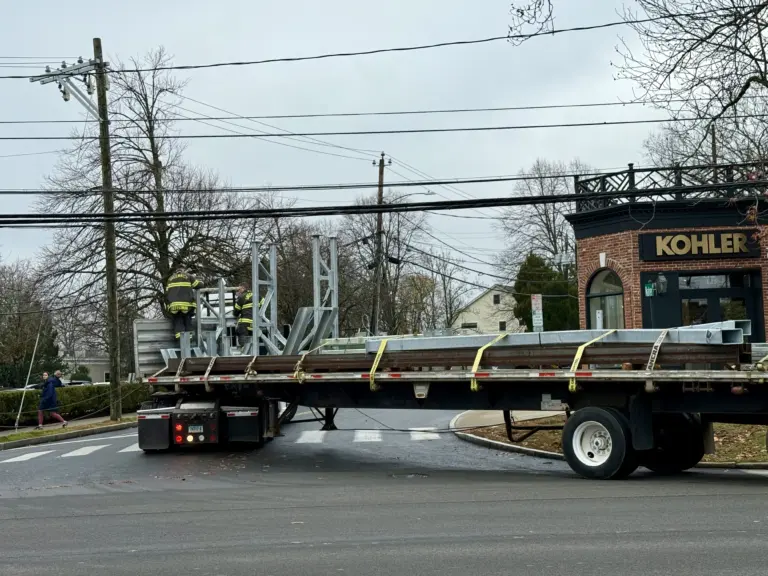
The Connecticut Department of Transportation (CT-DOT) announced recently that the long-awaited historic rehabilitation of the Lake Avenue Bridge above the Merritt Parkway will begin in June with an anticipated completion date of October 2019.
“The Merritt Parkway Conservancy welcomes the restoration and renewal of the Lake Avenue Bridge, which is among the most unusual of the Merritt’s distinctive historic bridges,” said Wes Haynes, the Conservancy’s executive director. “This is the first major overhaul in this bridge’s nearly 80 year history and is long overdue. Renewing the structural steel, which has been flagged for repairs for over a decade, will give the bridge a new lease on life into the next century. And painting its rusty ornamental ironwork with its original colors will let today’s drivers enjoy the bridge’s delicacy and charm as it first appeared in the last century.”
The Merritt Parkway Conservancy is a member-supported non-profit organization dedicated to preserving the original vision of the parkway as a road for “pleasant transit” while enhancing it for today’s drivers. As a private sector member of the Merritt Parkway Advisory Committee within CT-DOT, the Conservancy consults on developing roadway, bridge and landscape improvements for the parkway, and reviews and monitors construction and maintenance work.
The Merritt Parkway – its 37.5-mile roadway and 1,364 acre landscaped right of way with 69 surviving original bridges – is Connecticut’s largest public space listed on the National Register of Historic Places. Constructed between 1934-1934, the Merritt ushered in modern highway design in the US, offering passenger cars a bucolic ride through Fairfield County uninterrupted by stop signs in a designed park landscape carefully blended into its surrounding environment. Each of its original bridges designed by George L. Dunkelberger is unique in design, representing a range of 1930s architectural styles.
The Lake Avenue Bridge, built in 1940, was one of the last of the Merritt’s original bridges to be built and differs from the majority in the use of stone faced wing walls. But its most prominent feature is its exposed steel and iron metalwork, all of which required painting to prevent rust. The cast iron grilles screening the bridge’s structure feature intricate grapevines derived from the State seal carrying torches and framing urns. Structural and ornamental metalwork throughout is currently painted light blue, but black and white photographs taken soon after the bridge was built indicated that the metalwork was darker and more varied in tone.
To determine the original colors, the Conservancy commissioned an architectural conservator. Jablonski Associates of New York removed small chips of paint from numerous areas on the bridge and examined the paint layers under a microscope to sequence and match the colors. The analysis revealed that the bridge was originally painted black, brownish-grey and gold to provide greater contrast between the open grilles and their highlights.
All work on the Merritt since 1995 has been planned under special historic rehabilitation guidelines, as is the case of the Lake Avenue Bridge. Restoring the bridge will entail complete deconstruction of the steel frame and iron grilles and railings spanning the parkway. The structural frame will be reconstructed with new steel topped by a new deck, and mortar joints in the stone-faced wing walls will be renewed. The original ornamental ironwork, which features robust grapevine grillwork, rosettes, and urns, will be conserved off-site and made complete again by recasting missing details. The greatest visual change will be in the color of the structural and ornamental metalwork, which will match its original 1940 three-tone color scheme.
The project is scheduled for a 17-week period beginning at the end of the school year necessitating a detour over an alternate route to cross the parkway. But the work will result in a much improved bridge returned to sound structural repair and restored to its original appearance.
For more information on the Merritt Parkway Conservancy, visit MerrittParkway.org




